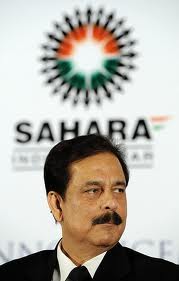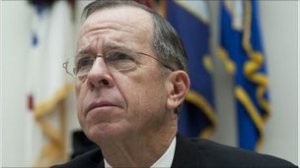IFRS for SMEs — What is IFRSs and IFRSs for SME Scope of IFRS All International Accounting Standards (IASs) and Interpretations issued by the former IASC (International Accounting Standard Committee) and SIC (Standard Interpretation Committee) continue to be applicable unless and until they are amended or withdrawn. IFRS sets out recognition, measurement, presentation and disclosure requirements of transaction and events in general purpose financial statements. IFRSs apply to the general-purpose financial statements and other financial reporting by profit-oriented entities i.e. those engaged in commercial, industrial, financial, and similar activities, regardless of their legal form. Entities other than profit-oriented business entities may also use IFRSs with certain changes in terminologies. General purpose financial statements are intended to meet the common needs of shareholders, creditors, employees, suppliers, government and the public at large for information about an entity’s financial position, performance, and cash flows. IFRS apply to consolidated as well as separate financial statements. If an IFRS allows both a ‘benchmark’ and an ‘allowed alternative’ treatment none of them is preferred treatment. However, in developing Standards, IASB intends not to permit choices in accounting treatment. Further, IASB intends to reconsider the choices in existing IASs. IFRS presents fundamental principles in bold face type and other guidance in non-bold type (the ‘black-letter’/’grey-letter’ distinction). Paragraphs of both types have equal authority. IFRS does not prescribe as who should apply IFRS. It left upon the national standard setters to decide which entities would be bound to comply with IFRS. The focus of international standard setting is on profit-oriented reporting entities, including non-corporate entities such as mutual funds. Despite concentrating on profit-type entities, the IASB envisages that non-profit entities in the private and public sectors may nevertheless find its Standards an appropriate basis for financial reporting. The specific needs of the public sector have been acknowledged by the International Federation of Accountants (IFAC), whose Public Sector Committee has on its agenda the preparation of standards based on IFRS, for use by public sector entities. However, a non-profit entity that states compliance with IFRS should comply with IFRS in full. A profit-oriented reporting entity is one that reports to users, who rely on the financial statements as a major source of financial information about the entity. Financial Statements are directed to the information needs of users such as investors and potential investors, employees, lenders, suppliers, creditors, customers, governments and the public at large. The term financial statements refer to statements that display different aspects of the entity’s financial performance and position. Financial position is reflected in the statement of financial position and a statement of changes in shareholders’ equity (excluding transactions with shareholders). Financial performance is reported in the income statement and liquidity position in the cash flow statement. These statements are supplemented by a series of detailed notes. Some Standards permit different treatments for certain types of transactions or events. One treatment is designated as the benchmark treatment, and the other the allowed alternative. Neither is designated as the IASB’s preferred approach. The Board intends to develop future Standards that require similar transactions and events to be accounted for in the same way. The IASB intends to reconsider the choices given in current IFRS with a view to reducing and potentially eliminating them. Structure of IASB The IASB is organised under an independent Foundation named the International Accounting Standards Committee Foundation (IASCF). That Foundation is a not-for-profit corporation created under the laws of the State of Delaware, United States of America, on 8 March 2001. Components of the new structure of IASB are as follows: 1. International Accounting Standards Board (IASB) – has sole responsibility for establishing International Financial Reporting Standards (IFRSs). 2. IASC Foundation – oversees the work of the IASB, the structure, and strategy, and has fundraising responsibility. 3. International Financial Reporting Interpretations Committee (IFRIC) – develops interpretations for approval by the IASB. 4. Standards Advisory Council (SAC) – advises the IASB and the IASCF. 5. Working Groups – expert task forces for individual agenda projects. 6. Monitoring Board of Public Authorities- effective 01.02.2009 Accounting Standards in India are issued by Accounting Standard Board (ASB) of Institute of Chartered Accountants of India and are largely based on IFRS. However, India has not been able to keep pace with the amendment and additions made in IFRS from time to time. This is largely because of its sensitivity to local conditions including the conflicting legal and economic environment. However, with the opening of Indian economy in near past, the convergence to IFRS has become unavoidable. Keeping this in view, ASB decided to form an IFRS task force in August 2006. Based on the recommendation of this task force, the Council of ICAI, in its 269th meeting decided to fully converge with IFRS from the accounting periods commencing on or after 1st April 2011. At initial stage, this convergence will be mandatory for listed and other public interest entities like banks, insurance companies, NBFCs, and large sized organizations with high turnover or annual income. Why this convergence? Converging with IFRS will have multiple benefits for Indian entities especially those who aspire to go global. Some of the benefits of convergence with IFRS are explained below: a) Accessibility to foreign capital markets The force of globalization has enabled the concept of ‘open economy’ and increasing numbers of countries has opened doors for foreign investment and foreign capital. Many Indian entities expanding and making their presence felt in international arena. Huge amount of capital commitment are required in this process for which entities have to list their shares in various stock exchanges around the world. Majority of stock exchanged either require or permit IFRS complaint accounts. Adaptation of IFRS will enable Indian entities to have access to international capital markets. b) Reduced Cost At present when Indian entities list their securities abroad they have to make another set of accounts which are acceptable in that country. Convergence with IFRS will eliminate this need for preparation of dual financial statements and thereby reduce the cost of raising capital from foreign markets. c) Enhance Comparability If the Financial statements of Indian entities are made in lines of IFRS, they will have greater comparability and will enable foreign companies to have broader and deeper understanding of the entities relative standing. This will also facilitate mergers, amalgamation and acquisition decisions. d) Boon for multinational group entities Entities in India may have a holding, subsidiary or associate company in some other nation. Compliance with IFRS for all group entities will enable the company management to have all the financial statements of the group in one reporting platform and hence will facilitate the consolidation process. e) New Opportunities for the professionals Migration to IFRS will not only be beneficial for Indian corporate, it will also be a boon to Indian accounting and other associated fields. India is a country with immense human resource. With knowledge of IFRS Indian professional can immerge as leading accounting service provider around the globe. This convergence will also open the flood gate of opportunities for valuers and actuaries as IFRS is fair value based accounting standard. What is IFRSs? International Financial Reporting Standards comprise: – IFRSs – standards issued after 2001 – IASs- standards issued before 2001 – Interpretations originated from the International Financial Reporting Interpretations Committee (IFRIC) – issued after 2001 – Interpretations of Standing Interpretations Committee (SIC) – issued before 2001 Effective IFRSs as on date • No of standards issued – effective 29 (total 41) IASs , 8 IFRSs • No of interpretations – effective 15 (total 18) IFRIC Interpretations, effective 11(total 33)SIC Interpretations • No of Financial Reporting Standards in force as on date – 63 Grouping of IFRSs into eleven parts: 1. Preface and framework Preface a. Objectives of the IASB b. Scope and authority of IFRSs c. Due process d. Timing of application of IFRSs e. Language Framework a. Introduction b. Qualitative characteristics of financial statements c. The elements of financial statements d. Recognition of the elements of financial statements e. Measurement of the elements of financial statements f. Concepts of capital and capital maintenance 2. Other literature a. IASC Foundation Constitution b. Due process Handbook of IASB c. Due process Handbook of IFRIC d. Glossary 3. Presentation of Financial Statements Standard Number Standard Name IAS 1 Presentation of Financial Statements IAS 7 Statement of Cash Flows IAS 33 Earnings Per Share IAS 8 Accounting Policies, Changes in Accounting Estimates and Errors IAS 10 Events after the Reporting period IAS 21 The effects of changes in foreign exchange rates IAS 29 Financial Reporting in Hyperinflationary economies SIC 7 Introduction of the EURO IFRIC 7 Applying the restatement approach under IAS 29 Financial Reporting in Hyper inflationary Economies 4. IFRSs on Interim Financial Statements IAS 34 – Interim Financial Reporting 5. IFRSs on Group Reporting Standard Number Standard Name IFRS 3 Business Combinations IAS 27 Consolidated and separate financial statements IAS 28 Investment in Associates IAS 31 Interest in joint ventures 6. IFRSs on Assets Standard Number Standard Name IAS 2 Inventories IAS 16 Property, Plant & Equipment IAS 40 Investment Property IAS 38 Intangible Assets IAS 32, IAS 39, IFRS 7 Financial Assets / Financial Instruments IAS 41 Biological assets IFRS 5 Non-Current Assets held for sale & Discontinued operations IAS 17 Leases IFRS 6 Exploration and Evaluation of Mineral Assets 7. IFRSs on Expenses and Liabilities i. IAS 19 – Employee Benefits ii. IFRIC 14- IAS 19 – The Limit on a Defined Benefit Asset, Minimum Funding Requirements and their Interaction iii. IAS 37 – Provisions, Contingent Liabilities and Contingent Assets iv. IFRIC 1 -Changes in Existing Decommissioning, Restoration and Similar Liabilities v. IFRIC 5- Rights to Interests Arising from Decommissioning, Restoration and Environmental Rehabilitation Funds vi. IFRIC 6- Liabilities Arising from Participating in a Specific Market – Waste Electrical and Electronic Equipment vii. IAS 12- Income Taxes viii. SIC 21 – Income Taxes – Recovery of Revalued Non-Depreciable Assets ix. SIC 25- Income Taxes – Changes in the Tax Status of an Enterprise or its Shareholders x. IFRS 2- Share-based Payment xi. Financial liabilities / Financial Instruments a. IAS 32 Financial Instruments: Presentation b. IAS 39 Financial Instruments: Recognition and Measurement c. IFRS 7 Financial Instruments: Disclosure 8. IFRSs on Income i. Construction contracts (IAS 11) ii. Revenue (IAS 18) iii. Agriculture income (IAS 41) iv. Service concession arrangements – IFRIC 12 & SIC 29 v. Customer loyalty programmes – Customer reward credit or points IFRIC 13 9. IFRs on Disclosure A. IAS 24 Related Party Disclosures B. IFRS 8 Operating Segments 10. IFRSs on Industry i. IFRS 4 Insurance Contracts ii. IAS 26 Accounting and Reporting by Retirement Benefit Plans 11. IFRSs on First time adoption – IFRS 1 IFRSs for SME History In Sept 2003: World Standard Setters survey n June 2004: Discussion Paper (117 comments) n April 2005: Questionnaire on recognition and measurement (94 responses) n Oct 2005: Roundtables on recognition and measurement (43 groups) n Feb 2007: Exposure Draft (162 comments) n Nov 2007: Field tests (116 real SMEs) n Mar – Apr 2008: Board education sessions n May 2008 – Apr 2009: Redeliberations n May 2009: Near-final draft posted on IASB website n 1 June 2009: Ballot draft sent to the Board n 9 July 2009: Final IFRS for SMEs issued Why IFRSs for SME A. Topics not relevant to SMEs are omitted. B. Where full IFRSs allow accounting policy choices, the IFRS for SMEs allows only the easier option. C. Many of the principles for recognizing and measuring assets, liabilities, income and expenses in full IFRSs are simplified. D Significantly fewer disclosures are required. E the standard has been written in clear, easily translatable language. What is SME as per IFRSs SME Small and medium-sized entities are entities that: Do not have public accountability, and o Publish general purpose financial statements for external users. Examples of external users include owners who are not involved in managing the business, existing and potential creditors, and credit rating agencies. General purpose financial statements are those that present fairly financial position, operating results, and cash flows for external capital providers and others. An entity has public accountability if: o Its debt or equity instruments are traded in a public market or it is in the process of issuing such instruments for trading in a public market (a domestic or foreign stock exchange or an over-the-counter market, including local and regional markets), or o It holds assets in a fiduciary capacity for a broad group of outsiders as one of its primary businesses. This is typically the case for banks, credit unions, insurance companies, securities brokers/dealers, mutual funds and investment banks. Contents of IFRSs for SME – divided into 35 sections 1. Small and Medium-sized Entities 2. Concepts and Pervasive Principles 3. Financial Statement Presentation 4. Statement of Financial Position 5. Statement of Comprehensive Income and Income Statement 6. Statement of Changes in Equity and Statement of Comprehensive Income and Retained Earnings 7. Statement of Cash Flows 8. Notes to the Financial Statements 9. Consolidated and Separate Financial Statements 10. Accounting Policies, Estimates and Errors 11. Basic Financial Instruments 12. Additional Financial Instruments Issues 13. Inventories 14. Investments in Associates 15. Investments in Joint Ventures 16. Investment Property 17. Property, Plant and Equipment 18. Intangible Assets other than Goodwill 19. Business Combinations and Goodwill 20. Leases 21. Provisions and Contingencies 22. Liabilities and Equity 23. Revenue 24. Government Grants 25. Borrowing Costs 26. Share-based Payment 27. Impairment of Assets 28. Employee Benefits 29. Income Tax 30. Foreign Currency Translation 31. Hyperinflation 32. Events after the End of the Reporting Period 33. Related Party Disclosures 34. Specialised Activities 35. Transition to the IFRS for SMEs Glossary Derivation Table Basis for Conclusions – published in a separate booklet Illustrative Financial Statements and Presentation and Disclosure Checklist – published in a separate booklet Omitted topics in IFRSs for SME The IFRS for SMEs does not address the following topics that are covered in full IFRSs: n Earnings per share n Interim financial reporting n Segment reporting n Special accounting for assets held for sale Examples of options in full IFRSs NOT included in the IFRS for SMEs n Financial instrument options, including available-for-sale, held-to-maturity and fair value options n The revaluation model for property, plant and equipment, and for intangible assets n Proportionate consolidation for investments in jointly-controlled entities n For investment property, measurement is driven by circumstances rather than allowing an accounting policy choice between the cost and fair value models n Various options for government grants. Conclusion To conclude IASB put lot of efforts in coming out IFRSs for SME. IASB has received 162 comments on Exposure Draft for IFRSs for SME. IASB follows transparent approach for formulation of standards. | 









Impressions of Visitor & Few Replies